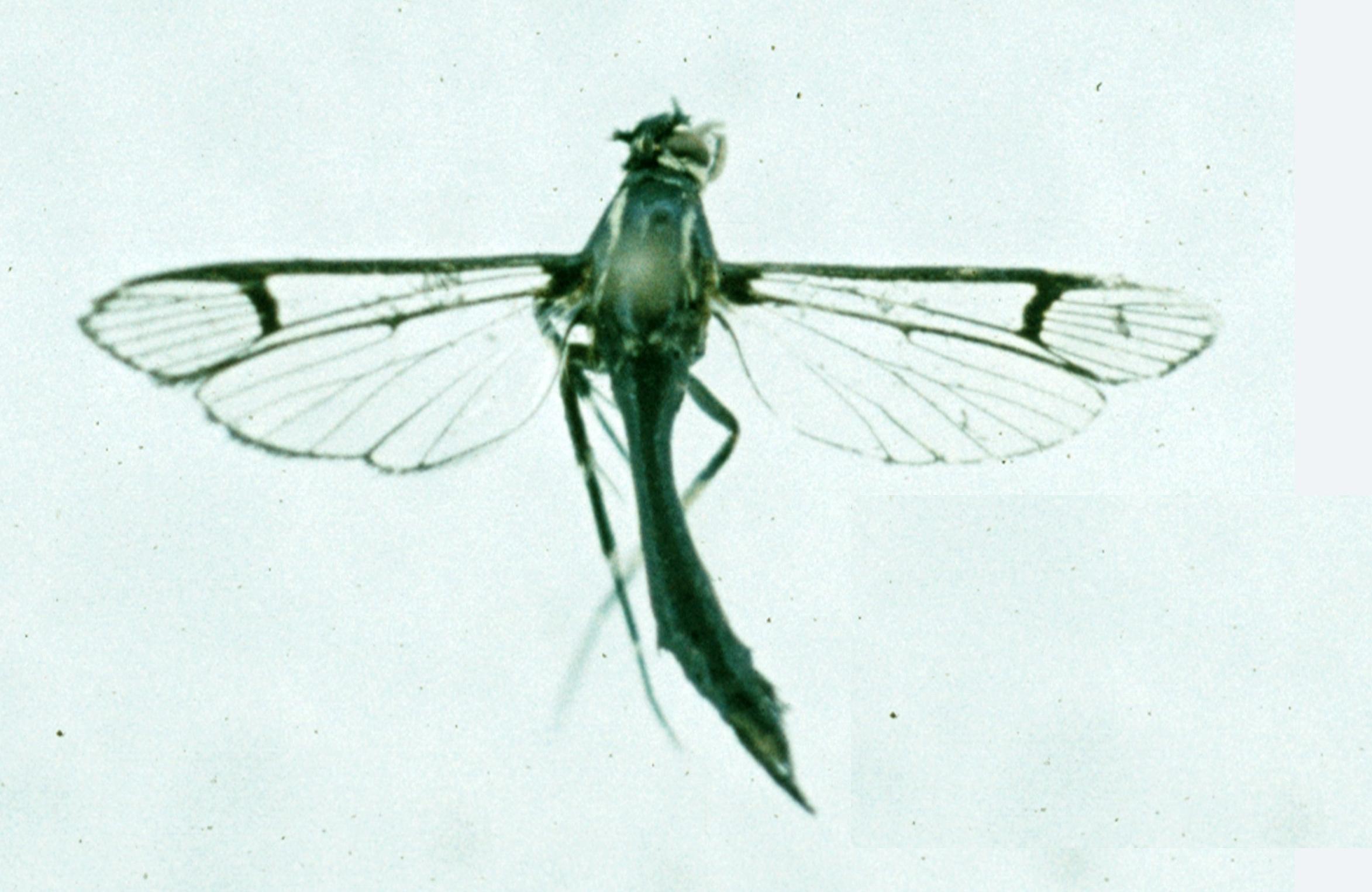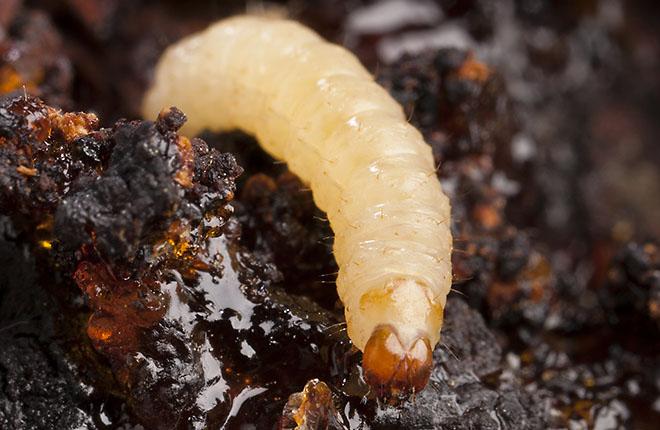Lesser Peachtree Borer on Peach
Return to Insect Pests
Lesser peachtree borer (Synanthedon pictipes) moths resemble wasps; adults are slender and dark blue with thin, pale yellow bands on the second and fourth abdominal segments. Both pairs of wings are clear, except for the edges and veins, which have bluish-black scales. Antennae of males are finely tufted. Lesser peachtree borers resemble male peachtree borers but have fewer yellow bands on the abdomen (lesser peachtree borers have two bands and peachtree borers have three or more complete bands). Mature larvae are about 1 inch long, cream-to-pink in color, and have light brown heads. Eggs are small, reddishbrown, and laid in groups in bark cracks. Lesser peachtree borer attacks older trees and can be found on any part of the tree (scaffold limbs, branches, and trunk). Symptoms include clear, oozing gum (gummosis) with frass inside the gum. Outer bark damage can include scarring and peeling in extreme infestations. Decline and tree death may occur.

Adult lesser peachtree borer.
(Photo: Carroll E. Younce, USDA Agricultural Research Service, Bugwood.org)

Lesser peachtree borer larva.
(Photo: Peggy Greb, USDA Agricultural Research Service)

Lesser peachtree borer damage to tree.
(Photo: Carroll E. Younce, USDA Agricultural Research Service, Bugwood.org)

Gummosis associated with lesser peachtree borer damage.
(Photo: Carroll E. Younce, USDA Agricultural Research Service, Bugwood.org)
Management:
- Monitor populations with pheromone traps.
- Apply insecticide sprays to trunk and scaffold limbs after peak flights.
